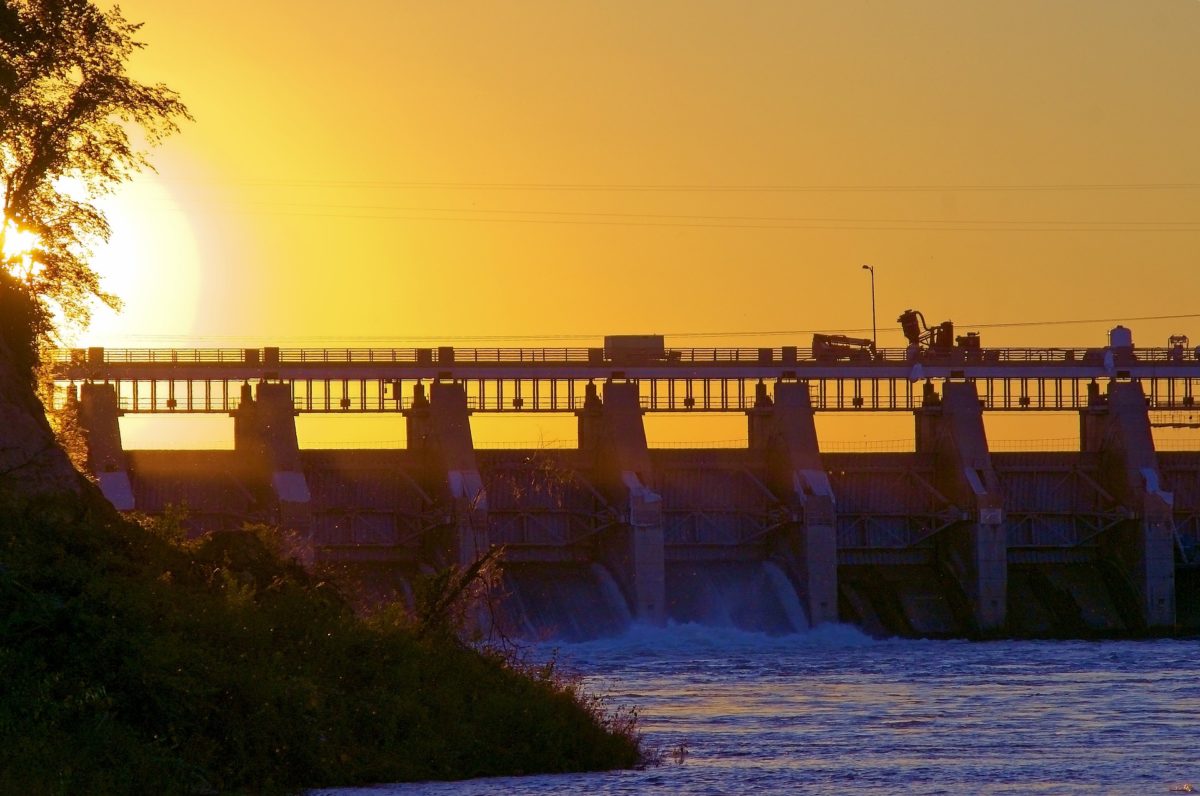Despite not being included among the “new” renewable energy technologies, hydropower is expected to play a key role in the world’s future energy system according to Indra Overland, head of the Center for Energy Research at the Norwegian Institute for International Affairs.
“While many people writing and talking about the geopolitics of the energy transition are obsessing about critical materials, cyber security threats and electricity blackouts, hydropower is actually one of the biggest geopolitical stories in the energy transition, but gets almost no attention,” Overland told pv magazine.
He pointed out hydro infrastructure can endure with minimal maintenance and thus become extremely cheap even if its initial capital expenditure is considerable. Moreover, hydro is the perfect accompaniment to intermittent renewables such as solar and wind because it is a cheap, mature, proven technology for energy storage that can be turned swiftly on and off.
While labs worldwide frantically research energy storage technologies in the hope of addressing the intermittency and transmission problems associated with solar and wind, a solution exists in the form of hydropower. “Unlike other renewable energy technologies, hydropower is not dependent on critical materials or future technological advances,” said Prof Overland. “In light of its suitability for storage, using hydropower for electricity grid baseload, as many countries do, borders on insanity both in energy system and geopolitical terms.”
Hydro no obstacle to solar
Hydropower is expanding in many parts of the world, with most developing countries that have significant water resources building dams. Some developed countries, on the other hand, are removing hydro infrastructure but those are mostly neglected small dams. “In terms of megawatt generation capacity and megawatt-hour output, hydropower is expanding globally and will continue to do so, especially as it is increasingly hooked up to expanding solar and wind generation,” said Overland.
The abundance of any energy resource – coal, natural gas or hydro – can easily become an obstacle to the development of alternative, less mature and therefore more costly power sources. Institutional and infrastructural lock-in also pose threats, as Overland explained. “If a country’s engineers and energy experts are all trained to deal with one type of energy it takes time to establish another,” he said. “And once large scale infrastructure has been built for one energy type it will usually be cheaper to refurbish or extend that infrastructure than to create new infrastructure from scratch. However, in the case of hydro, solar and wind power, much of the infrastructure should overlap as they are all about electricity generation, so hydropower should not be too much of an obstacle in the long run.”

Image: Norsk Utenrikspolitisk Institutt (NUPI)
Pumped hydro key for renewables integration
Pumped hydro is expected to become a key technology for the integration of hydropower with newer renewable energy technologies. “It is simple, highly viable and can be implemented at most hydropower dams,” said Overland. “By reverse-pumping water up into the dam when electricity demand is low, or there is a surplus of electricity in the grid, this electricity can be stored in the form of water in the dam and released again when there is a need. Thus, pumped hydro enhances the storage capacity and flexibility of a hydropower facility, which in turn makes it an even better partner for solar and wind power.”
The energy expert sees hydropower as the most geopolitically salient renewable energy source. “Countries with major hydropower resources have the opportunity to become the linchpin of regional renewable energy complexes,” he said. Such countries would have the chance to support the expansion of solar and wind power domestically and in neighboring countries and generate export revenue at the same time. The list of such nations includes Angola, DR Congo, Ethiopia, Guatemala, Kyrgyzstan, Tajikistan, Nepal, Bhutan, Laos, Norway, Paraguay, Switzerland and Georgia.
Logically, the energy transition should enable these nations to play more important regional roles. “But of course this depends on the integration of electricity grids, markets and pricing, which in turn depend on the removal of subsidies, and all of these depend on regional integration and cooperation,” said Overland. That means hydro-rich countries should also become drivers for energy market deregulation and integration at home and abroad, helping transform energy systems and regional politics.
An important technology breakthrough is being provided by floating PV. “I think both floating solar and hydro are key technologies for the future and can reinforce each other,” Overland added. “As long as there is enough hydro to fill the gap when there is no sunshine there is almost no limit to how much floating solar can be built – apart from access to suitable water surfaces.”
Hydropower is intermittent
Hydropower dams are great batteries so the technology has much less of an intermittency problem than solar and wind. However intermittency is still an issue, even if measured in seasons and years rather than hours and days.
Overland warned, if extreme weather events become more frequent due to climate change, hydropower will be affected just like solar and wind. In countries where glacial run off is an important part of the hydrologic system, climate change may have particularly serious consequences.
Glaciers gather varying snowfall during winter which runs off evenly during summer months. Thus glaciers function as a stabilizing buffer between river flow and annual variations in rainfall.
“When the glaciers are gone, their stabilizing effect on river flow will be lost and the effects of droughts will be exacerbated,” added Overland. “In light of the impact of climate change on hydropower, it is important to ensure the well planned and cautious use of hydropower resources to handle variations in precipitation.”
Go hydro, not nuclear
The energy professor highlighted two countries with a huge potential to combine solar and hydro with neighboring economies: Egypt and Uzbekistan.
Overland explained Egypt evidently has incredible solar potential but also has a rapidly expanding population which could consume much more electricity. “Thus, maximum speed and extent of solar power development is imperative for Egypt but it cannot entirely solve the country’s dependency on the Nile,” said Overland. To solve the problem, the Egyptian government has to get a grip on population growth.
“It is also important for Egypt to avoid repeating its past errors and wasting the new gas resources it has found, which could become a distraction,” added Overland. “Egypt should aim to become as good at energy governance as at the beautiful game of squash, where it is the world’s only superpower.”
Uzbekistan, another downstream country dependent on its rivers and upstream neighbors and with immense potential for solar, has recently embarked on a dramatic political transformation which could transform central Asia. “But, like the Egyptians, the Uzbeks need to avoid distractions such as the plan to build a nuclear power plant in cooperation with Russia, potentially saddling Uzbekistan with corruption, debt and environmental issues for a very long time,” Overland said.
Environmental concerns
When asked about the social and environmental impact of hydropower, Overland pointed out similar issues could be associated with any infrastructure project.
“Imagine how much land is covered in roads, industrial facilities, rubbish dumps, airports, agriculture and so on,” he replied. “If you try to estimate it the numbers are mind-boggling. So, I don’t see why hydropower dams should be such a big issue compared to everything else.” In his view, there are well-developed systems for dealing with the social consequences of infrastructure projects, in terms of environmental impact assessments and consulting with communities and ensuring rights are respected.
“The problem is that these systems are often not used properly, as in the case of the Myitsone Dam in Myanmar, involving murky deals between a Chinese government company, the Burmese government and a Burmese conglomerate,” said Overland.
As with wind power, which is often subject to local resistance, if residents have ownership and a share of the revenue generated, they are much more likely to be receptive.
“Of course some dams should not be built regardless of benefits for the locals because the environmental impact is simply too great,” Overland concluded.
In his previous interviews for this series, Indra Overland has discussed geopolitical issues related to China, Russia, Saudi Arabia, storage, super-grids, and the geopolitics of the energy transition.
This content is protected by copyright and may not be reused. If you want to cooperate with us and would like to reuse some of our content, please contact: editors@pv-magazine.com.




The list of countries with hydro potential expands greatly when you add in off-river storage. Andrew Blakers and his team found 22,000 potential sites for this in dry Australia, from a satellite survey. Even if many of these prove unsuitable from a closer look, you only need 1% – 2% to pan out to get hundreds of Gwh of capacity, enough to balance the entire national grid. You only need enough water to make up evaporation. At a pinch, you can use sea-water, as the Japanese did in a now closed pilot plant in Okinawa. This way, even bone-dry but mountainous Oman has potential
BTW, a striking portrait photo. The night before the execution of a minor GoT character?